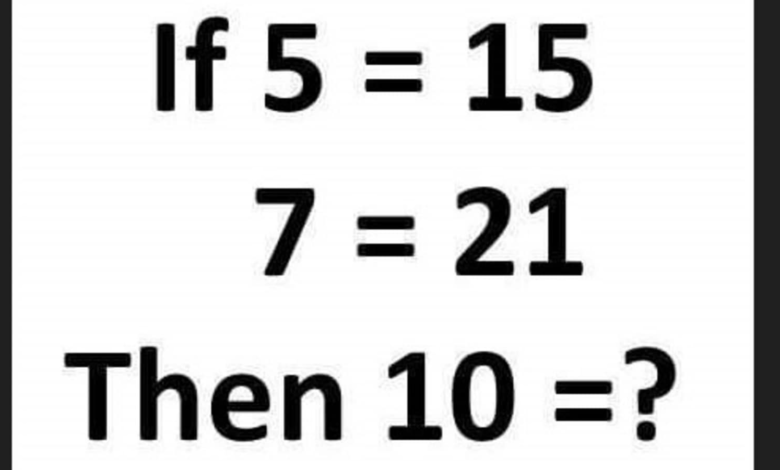Only those who think outside the box can solve this mind-bending puzzle that has stumped many | Trending

Brain teasers have become a fascinating part of online culture, offering not just entertainment, but a workout for the brain. They challenge our thinking, test our problem-solving skills, and often leave us scratching our heads. If you’ve ever found yourself scrolling through endless websites looking for a new challenge, here’s a treat for you. A brain teaser on X sparked curiosity, with users sharing guesses and engaging in debate. (X/@Brainy_Bits_Hub) (Also read: Brain teaser: You are a genius if you can solve this IQ test that 98% of people failed to answer) A simple yet engaging challengeRecently, a brain teaser shared the account Brainy Bits Hub on X has caught the eye of thousands. The post reads: “If 5 = 15, 7 = 21, then 10 = ?” With over 1.9k views and more than 130 comments, this seemingly simple puzzle has sparked a flurry of reactions. So, what’s the trick behind this brain teaser? At first glance, it looks like a straightforward mathematical equation, but as with many brain teasers, the answer requires a bit more thought. The challenge lies in discerning the pattern that links the numbers together, a task that’s trickier than it seems. Take a look here at the puzzle: Online reactionsThe post has prompted a wide variety of responses from the online community. One user, puzzled the challenge, wrote, “Is this a trick question or am I missing something?” Their comment highlights how brain teasers often create a sense of mystery, encouraging curiosity. Another user offered their answer, “I think it’s 30,” reflecting the common tendency to jump to conclusions. Others were more confident in their responses, with one claiming “The answer is clearly 32,” while another suggested “It must be 20.” (Also read: You’re a true genius if you can solve this tricky brain teaser that challenges your maths skills) Why brain teasers keep us hookedThe popularity of brain teasers on social media can be attributed to several factors. First, they challenge our intellect, offering a sense of satisfaction when we finally crack the code. Secondly, they are highly shareable—people love testing their friends and engaging in friendly debates over the answer. Lastly, these puzzles often tap into our competitive nature, urging us to be the first to solve them or to have the most accurate answer.






